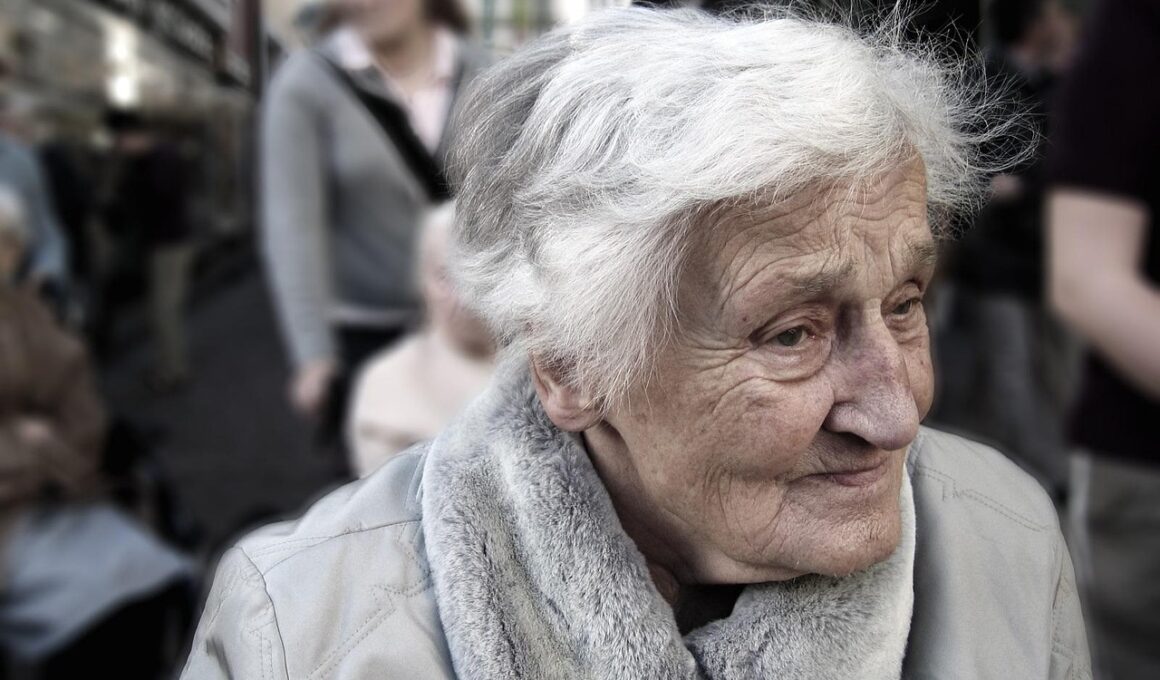Improving Posture Through Senior Group Fitness Classes
As we age, maintaining proper posture becomes increasingly crucial to overall health and well-being. Senior fitness classes specifically aim to enhance posture, flexibility, and strength. These classes often incorporate exercises targeting core muscles, which play a significant role in supporting the spine. Improved posture can help alleviate common discomforts associated with aging, notably lower back pain. Senior group fitness classes also create a supportive environment, fostering social interaction among participants. This encouragement can boost motivation levels and provide a sense of community. Instructors trained in senior fitness are particularly mindful of the unique needs of older adults. They ensure the exercises are safe and appropriate for all fitness levels. Furthermore, engaging in regular group fitness sessions can foster habits that promote better posture outside of class. Activities such as yoga or Pilates may greatly enhance one’s awareness of body alignment, making it easier to maintain effective posture throughout daily movements. Many participants report increased energy levels and a more positive outlook as they commit to these fitness routines. Regular attendance can yield long-term physical improvements and enhance quality of life.
Participating in senior fitness classes can also lead to improved balance and coordination. These two factors are vital for maintaining posture, especially in older adults who may be more prone to falls. Many groups incorporate tailored balance exercises into their routines. This not only assists in strengthening the lower body but also ensures that seniors remain agile and mobile. Activities that include stability training, such as standing on one leg or using balance boards, can be fun and engaging. As strength and balance improve, participants will likely notice a significant transformation in how they hold their bodies. Moreover, older adults often face the challenge of muscle stiffness that can result from physical inactivity. Regular movement through group fitness helps increase blood circulation, which can alleviate muscle tightness and enhance flexibility. The rhythmic nature of these classes, especially those involving dance or gentle aerobics, also plays a role in improving coordination. With consistent practice, individuals may begin to naturally adopt a more upright posture. Ultimately, the combination of dedicated classes and supportive instructors leads to compelling improvements in both posture and quality of life for seniors.
The Role of Instructors in Senior Fitness
Effective instruction is a cornerstone of successful senior fitness classes. Qualified instructors understand the specific needs of older adults and tailor exercises to accommodate varied fitness levels. They have the expertise to modify movements based on health conditions and physical limitations. By providing appropriate adjustments, instructors help ensure that every participant feels comfortable and can engage fully in the class. This attention to individual needs also encourages seniors to push their limits safely, unlocking potential they may not have realized they possessed. Instructors frequently emphasize the importance of posture during exercises, using cues to help participants maintain proper alignment. This reinforcement nurtures an environment centered on awareness and body mechanics. Furthermore, instructors often incorporate activities that enhance core strength—crucial for maintaining good posture. They may utilize equipment like resistance bands, light weights, or even Pilates balls to guide participants in focusing on their core. By fostering a comprehensive understanding of body alignment, instructors equip seniors with the tools to carry these skills into daily living, ultimately minimizing the risk of injury.
Additionally, socializing during fitness classes adds an important layer to the benefits of participation. Many seniors face feelings of loneliness and isolation. Fitness classes become an avenue for building friendships and creating a support system among peers. When individuals come together regularly, they share experiences and motivate one another in their fitness journeys. This social connection can also contribute to improved mental health, helping to lower anxiety and depression levels. Regular interaction with supportive peers provides accountability and encouragement, promoting commitment to workout schedules. Many fitness centers plan community events and fun challenges that involve the entire group, fostering camaraderie. Having a sense of belonging is fundamental to overall well-being, especially for older adults who may experience a diminished social circle. Group classes provide a structure, ensuring that participants feel welcome and valued. Positive relationships can lead to personal growth and renewed motivation. In effect, the blended benefits of fitness and social engagement create a holistic approach to aging gracefully and confidently, ensuring seniors live their best lives.
Benefits Beyond Physical Health
Beyond physical strength and balance, group fitness classes can positively impact overall mental health and emotional well-being. Engaging in regular physical activity, especially in a group setting, has been linked to reductions in stress and signs of depression. The release of endorphins during exercise fosters feelings of joy and relaxation, enhancing mood significantly. Alongside these mental health benefits, many seniors report improved cognitive function as a result of staying active. Exercising within a group can also stimulate social attention, which is vital in combating cognitive decline. Furthermore, seniors are often encouraged to engage in regular conversations and share experiences during these classes. These interactions stimulate cognitive functions like memory and focus, ultimately supporting mental agility. Participating in classes creates a reunion of body and mind, leading to holistic health benefits. It empowers seniors to regain a sense of control over their physical changes with age while also nurturing positivity. Continuous practice enables them to lead fulfilling lives with higher self-esteem and confidence. Thus, group fitness becomes more than a physical activity; it transforms into a cornerstone of healthy aging.
Moreover, seniors often enjoy the variety that group fitness classes offer. These classes can include diverse forms of exercise, including low-impact aerobics, strength training, yoga, and dance. This variety keeps participants engaged and excited to come back each session. It also helps individuals discover new interests and potential passions within fitness. The exploration of various activities ensures a well-rounded approach to maintaining health and fitness. Furthermore, regular participation introduces routine, which is essential for establishing long-term healthy habits. Instructors may rotate classes and introduce new themes to keep the environment fresh and stimulating. Personalized programs cater to seniors, helping them track progress and celebrate milestones. This recognition fosters a rewarding experience, reinforcing the joy of movement. Additionally, collaborating with others in exercises cultivates a sense of belonging and encourages accountability. Participants grow to look forward to their classes, anticipating friendship and fun. This positive association with fitness encourages sustainable routines throughout their lives. Hence, seniors benefit from an enriching blend of physical activity and meaningful connections that foster resilience against aging challenges.
Conclusion
Senior group fitness classes provide numerous advantages that contribute to improving posture and overall well-being. With professional instructors, participants receive tailored guidance and motivation, enhancing their fitness journey and building confidence. The supportive environment fosters friendships, reducing feelings of isolation while encouraging individuals to commit to their health. This social engagement complements physical benefits, leading to improved mental health, further enriching quality of life. Balancing strength, flexibility, and cardiovascular fitness creates a comprehensive approach for seniors. By embracing the variety of classes available, seniors can discover enjoyable activities that not only strengthen them physically but also provide a sense of purpose. As seniors engage in these enriching experiences, they are empowered to age gracefully and actively. The ripple effects of enhanced posture, strength, and social connections contribute to an uplifting perspective on fitness, encouraging seniors to live vibrant, fulfilling lives. Their efforts in group fitness extend beyond physical activities; it becomes a celebration of life, reinforcing resilient spirits. Ultimately, seniors investing in their mind and body ensure they thrive amidst the beauty of aging, setting inspiring examples for future generations.


